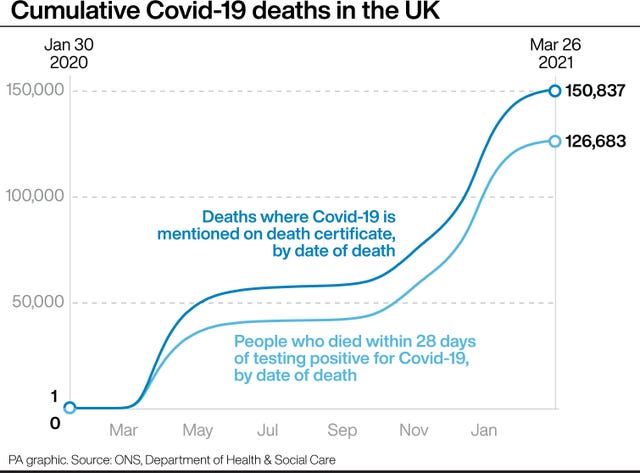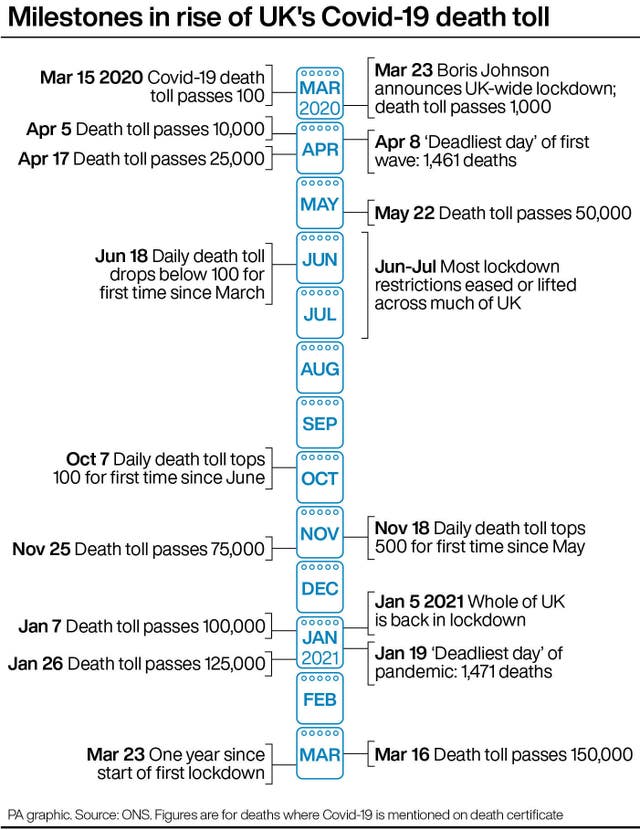One year from first-wave peak: How the UK’s second wave compares
More than a third of all Covid-19 deaths have taken place since the start of 2021.

Exactly one year ago, on April 8 2020, 1,461 deaths involving coronavirus occurred in the UK.
It was the ‘deadliest day’ of the first wave of the virus.
Each of those 1,461 people had Covid-19 recorded on their death certificate.
The UK had gone into lockdown 16 days earlier, but many of those who died on April 8 would have caught Covid-19 before the restrictions began, when the virus was spreading rapidly in the first few weeks of March.

For a long time it looked as if April 8 would remain the UK’s worst day of the pandemic, even as the second wave pushed the daily death toll back above 1,000 in early January 2021.
But the numbers kept climbing, and once all the deaths for the period had been registered, it emerged that 1,471 deaths had occurred on January 19: 10 higher than the first-wave peak.
That Tuesday in early 2021 became the peak of the second wave – and also the UK’s ‘deadliest day’ of the pandemic so far.
Figures for deaths involving coronavirus are published by the Office for National Statistics (ONS), based on mentions of Covid-19 on death certificates.
An analysis of the latest ONS data by the PA news agency, for deaths registered up to March 26 2021, shows just how the second wave has had a far greater and deadlier impact on the country than the first.

A total of 150,837 deaths have now occurred in the UK where Covid-19 was mentioned on the death certificate.
Using the end of August 2020 as a dividing line between the first and second waves, 57,833 deaths took place in the first wave, while 93,004 deaths have so far taken place in the second wave.
More than a third (37%) of all deaths in the UK since the pandemic began have occurred since the start of 2021.
The deadliest four-week period has also occurred in the second wave of the virus, with 33,717 deaths taking place in the four weeks to February 1 2021.
England, Wales and Northern Ireland each recorded their highest daily death tolls during the second wave of the pandemic (on January 19, 11 and 17 respectively). Only Scotland saw its “deadliest day” during the first wave (April 9).

There is one feature common to both waves of the virus, however: the speed at which the number of deaths fell in the weeks following the peak.
Two months on from the first-wave peak on April 8 2020, the daily death toll had dropped by 89%.
Two months on from the second-wave peak on January 19 2021, the death toll had fallen by 94%.
In both scenarios, a UK-wide lockdown played a crucial role in driving down the level at which the virus was circulating, which in turn reduced the number of hospitalisation and deaths.
The rollout in recent months of the Covid-19 vaccine could also be “breaking the link” between infections and deaths, according to the latest research from the ‘React’ study commissioned by the Government and run by Imperial College London.





